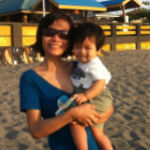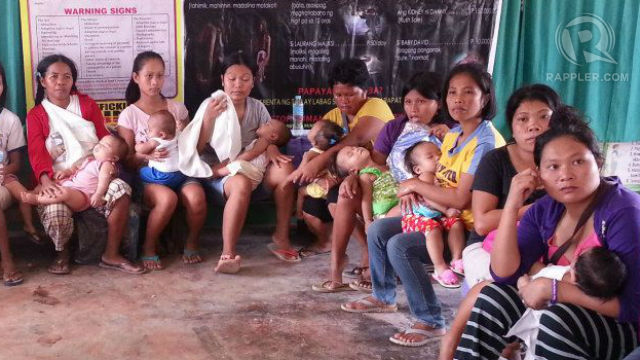SUMMARY
This is AI generated summarization, which may have errors. For context, always refer to the full article.
 COMPOSTELA VALLEY, Philippines – In the aftermath of Typhoon Pablo, I had the opportunity to take part in a breastfeeding mission for the victims in an evacuation site in Compostela Valley, a province in Mindanao.
COMPOSTELA VALLEY, Philippines – In the aftermath of Typhoon Pablo, I had the opportunity to take part in a breastfeeding mission for the victims in an evacuation site in Compostela Valley, a province in Mindanao.
The Philippines is disaster prone, and relief work sparked my interest because of its sheer need and urgency.
Relief work took a whole new meaning with my new understanding of breastfeeding and its implications for infants in disaster areas.
Most health workers have little knowledge of breastfeeding and lactation management during crisis. I have read the theories and expert recommendations, but I have not seen them at work on the ground.
Mothers in disaster, breastfeeding
We anticipated starving little babies at an evacuation center in New Bataan, but were pleased to discover that they had the most secure food supply among all the victims!
Despite circumstances, all mothers were breastfeeding exclusively to feed their babies.
Stress delays the ejection of milk from the breasts, but does not affect production in significant ways. Problems usually start when breastfeeding moms begin to doubt their ability to produce enough milk and are offered breast milk replacements.
The needs of babies are usually overlooked during times of crisis simply because they can’t talk. However, good intentions should also be guided by expert recommendations.
No need for powdered milk donations

Policies restrict the distribution of formula milk during crises for a reason. Formula milk can be extremely dangerous for babies in difficult circumstances due to lack of clean water.
If the mother is bottle-feeding, sourcing clean water for mixing with milk and to clean feeding bottles is a problem. This is avoidable though through breastfeeding.
Velvet Escario-Roxas, a breastfeeding support group community-worker, shared that during Typhoon Ondoy, a mother reported dramatic increase in her breast milk supply in just two days.
This is contrary to the expectation that milk production will stop during times of stress. In fact, prior to the tragedy, this mother was already giving her baby mostly formula milk.
Why this increase in milk supply? Because in the low resource setting of an evacuation center, she had no choice but to breastfeed!
This worked to the advantage of the natural processes that control milk production in a woman’s breasts. The more demand, the more supply. It’s as simple as that.
Survival
Breastfeeding is a robust human process, and it makes sense because it is essential to the survival of our own kind.
For those who breastfeed, there is a difference between perceived insufficiency and real low milk supply.
Truth is, even among malnourished women the quality and composition of milk is relatively unaffected. Women can produce enough milk except in rare medical conditions.
To note, even grandmothers have been reported to produce milk again for their own grandchildren.
Only breast milk can provide immunity and protection through specific antibodies. Each breastfeed is like a dose of painless vaccine against the lurking germs that are surely present in unsanitary evacuation centers.
Nurturing space for mothers
.jpg)
Babies in difficult circumstances need human milk – it is optimal for healing and for protection.
The solution to this is support and reassurance, not milk substitution. If an evacuation center introduces milk formula (from well-meaning donors), the mother is most likely to convert to mixed-feeding or bottle-feeding, as studies have shown.
True enough, when we surveyed their breastfeeding concerns, some reported (perceived) low milk supply.
We witnessed in New Bataan that interventions were designed to support pregnant and breastfeeding mothers to save nursing infants through the Infant Feeding during Emergency (IFE) strategy.
If we can protect the mother, provide her with proper nutrition, and make things a little easier for her, we ultimately save her and the nursing infant.
Thus, establishing a Women Friendly Space is one important component of IFE. The IFE strategy also safeguards mothers and babies who have already started mix-feeding (combining breast and bottle-feeding) by offering viable alternatives like wet nursing and donor milk while the mother is being assisted in building up her own milk supply in a feasible process called re-lactation.
Call for health workers
It is possible to protect and support breastfeeding mothers and babies through simple interventions.
It is our dream that all future evacuation centers would emulate the Woman-Friendly Space as the first step in the IFE where mothers who are pregnant and with nursing children are affirmed, encouraged and protected.
This is particularly crucial for a disaster-prone country like ours. Currently, we have a community-based mother support group, Arugaan, but we also need health workers skilled in doing this aspect of public health.
If you want to know more about IFE strategies, click this link. – Rappler.com
Dr Lei Camiling-Alfonso served as under the DOH Doctor to the Barrio program. Her personal encounters with our public health system prompted her involvement with UnangYakap (Essential Intrapartum and Newborn Care), a WHO initiative for evidence-based labor/delivery and newborn care practices.
This article is taken from the original blog article, “Pearls from Compostela Valley.”
Add a comment
How does this make you feel?
There are no comments yet. Add your comment to start the conversation.